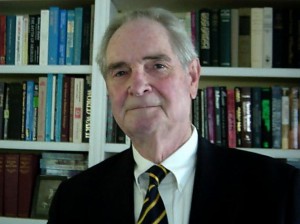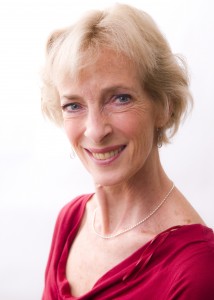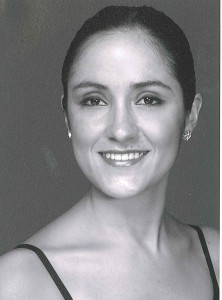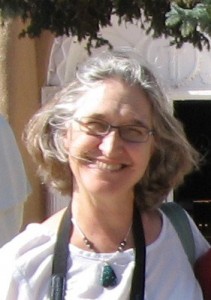Today I have the pleasure of introducing a very special guest on 4dancers. I’m sure readers will find the interview with Dr. William G. Hamilton enlightening. He has worked with dancers at some of the leading companies and schools in the United States…
1. Can you tell readers a bit about your medical background and how you came to work with dancers?
I graduated from Princeton University with a degree in Engineering. Eventually I went to Medical School at Columbia University, College of Physicians & Surgeons. This was followed by a General Surgery internship and residency in Orthopedic Surgery, at the Columbia-Presbyterian Medical Center in New York City, NY. Then a post-graduate fellowship in children’s orthopedics.

In 1972 I was a young orthopedic surgeon practicing near Lincoln Center, treating young athletes and a few dancers. By a chance encounter, George Balanchine asked me to become the doctor for his company, New York City Ballet. I gladly accepted but knew that if I was going to treat these fascinating professionals I had a lot to learn about classical ballet, so I went to Lincoln Center regularly on the weekends to watch Balanchine’s Company classes and to learn the vocabulary of dance. This helped me to understand the source and mechanism of their injuries.
In 1975 Lincoln Kirstein asked me to be the consulting orthopedist for the School of American Ballet; the training academy for NYCB.
In the late 70’s Baryshnikov joined NYCB to work with Balanchine but shortly afterwards Mr. B’s health began to decline and this never really came to fruition. So, in 1980 Baryshnikov left “City Ballet” to become the director of American Ballet Theatre and asked me to become their doctor too. Currently, I also care for their school, the Jacqueline Kennedy Onassis School of Ballet at ABT.
Because most of the injuries to dancers occur in the foot and ankle, I developed a sub-specialty in this area of orthopedic surgery and in 1993 became the President of the American Orthopedic Foot and Ankle Society (AOFAS). I also belong to the International Association of Dance Medicine & Science (IADMS) plus numerous medical boards, associations and societies.
2010 marks my 38th year with NYCB and the 30th with ABT. I have enjoyed every minute of it!
2. Would you talk a little about what you are currently doing with dancers and for what organizations?
I currently diagnose and treat both acute and chronic injuries to dancers and athletes as well as non-performers and do various surgeries when they are indicated. This can be a challenge because dancers often have obscure problems related to their dance techniques that are not seen in athletes.
Another big challenge I’m involved with today is promoting wellness, screening, and injury prevention along with proper rehabilitation following an injury at NYCB and, to a lesser extent, ABT. This is a win-win approach both for the dancers and the dance companies.
I also consult for The Ailey School, as well as various Broadway shows and sports teams, such as the NY Yankees and the Knicks.
3. Are there any orthopedic injuries that you see repeatedly in dancers?
Dancers have two types of injuries: acute (sudden) and chronic (ongoing). The most common acute injury is the sprained ankle, which is also the most common injury in all sports that involve running and jumping. The most common chronic problem is tendonitis, which is a form of overuse injury. It is important that these injuries be diagnosed, treated, and properly rehabilitated to prevent recurrence or permanent disability. Unfortunately, most doctors don’t see enough dancers to understand the technical demands or their “weird” injuries. Many patients who come to see me for injuries that are not getting better have been misdiagnosed and the treatment regimen is not right for their problem.
4. What are some things that dancers can do to help prevent injury?
The key to injury prevention is to be in shape for what you are trying to do. This sounds simple but it is not always so straightforward. Each generation of athletes is running faster, jumping higher, and breaking old records and this is true for dancers as well. A double fouetté used to be a rare thing, but now it is seen all the time. So dancers can no longer get by with “class” only. Like athletes, they must cross-train in a gym—but not in mid-season—in offseason or in preparing for re-entry after a lay-off or injury. In mid-season cross-training can cause overuse injuries and burnout. Of course, proper nutrition, healthy weight control, and rest (sleep) are very important.
Linda Hamilton’s book: The Dancer’s Way. The New York City Ballet Guide to Mind, Body, and Nutrition. St. Martin’s Griffin, New York, 2009 is an excellent reference for all types of dancers.
5. Is it worthwhile to get an orthopedic screening, and if so, how often should you have it repeated?
An orthopedic screening is an invaluable tool because the body changes over time. Dancers need to know how to work with their unique “instrument.” This is especially important for professional-level dancers or those who are having chronic problems or recurrent injuries.
Ideally, it should be done on a yearly basis.
6. Do you have any recommendations for dancers who are looking for a good orthopedic doctor?
As noted above, orthopedists with experience in dance medicine are rare. The 1st place to start is to call up your local or regional ballet company and ask them who takes care of their dancers. Next would be to check the International Association of Dance Medicine & Science website at iadms.org. The next best thing would be to see a sports medicine doctor who takes care of the local soccer or football team.
7. Turnout is one of the ballet “buzzwords”…can you comment on how to approach improving turnout in a healthy way?
Turnout is complicated. The more you look into it, the more complicated it gets. It is the sum of the turnout in the hips + the knees + the foot & ankle; the hips being the most important. People are born with 3 types of hips:
- Normal, with equal turn in/turnout (normal “version” in medical parlance).
- Pigeon toed or turned in, ¯ turnout (“anteverted”).
- Duck footed—turned out with ¯ turn-in (“retroverted”). These people are born to be ballet dancers.
The orthopedic literature indicates that turnout of the hip is pretty much formed by age ten and it is doubtful that it can be improved by early ballet training. So it’s mainly a matter of making the most out of what you have naturally.
Learning to work with what you have is very important because forcing your turnout or getting it from below the knee is the most common technique fault in ballet and can lead to many injuries of the knee, foot and ankle. An orthopedic screening and working with a dance-oriented physical therapist can help you be sure that you are working properly.
8. What is the most satisfying thing about working with dancers?
Dancers are terrific patients and are great to work with. They just want to get better and get back to what they love to do. For me, the most rewarding moments have been seeing a dancer get back to performing after having had a serious injury that might have ended their career. Fortunately, these types of injuries are quite rare, but when they occur they are devastating and the recovery can be one year or longer.
9. Can you talk a bit about the NYCB Wellness Program?
The New York City Ballet wellness program began with a study over two seasons at the company in 2000. The purpose was to try to identify and treat weaknesses or imperfections so they could be corrected before they led to an injury. It was led by Clinical Psychologist, Dr. Linda Hamilton, with the help of the rest of the Company’s medical team: Orthopedic Surgeon Dr. William Hamilton; Chiropractor Dr. Lawrence DeMann, Jr. ; and physical therapist Marika Molnar. Later, we included registered dietician Joy Bauer after discovering nutritional problems. In addition to educational seminars, the wellness program includes screenings for orthopedic problems that may require physical therapy, fitness screenings that encompasses flexibility, strength, and endurance with a specialized program at the gym, and dietetic evaluations and counseling for healthy weight control. Psychological counseling is available for dancers who are struggling with problems, such as a serious injury. We also offer educational seminars. This has resulted in a 46% decrease in weeks lost to disability, so it’s been beneficial for both the health of the dancer and a savings for the company.
10. If you could communicate one thing to dancers as a group—what would it be?
Injury prevention and survival in dance depends to a great degree upon knowing your own body’s limitations and working within your natural abilities. A perfect body in dance is a dream not a reality. All dancers, including principals and stars have their physical strengths and weaknesses.
In the end, the most important thing in dance is talent and this can make up for many physical deficiencies because it’s the illusion in art that makes it so exciting.
Bio: William G. Hamilton, MD is an orthopedic surgeon who practices in New York City. He specializes in injuries to dancers and athletes. He graduated from Princeton University and the Columbia University College of Physicians and Surgeons. He is the orthopedic surgeon for The New York City Ballet, American Ballet Theatre, The School of American Ballet and the Jacqueline Kennedy Onassis School of Ballet at ABT. He consults for The Ailey School, the New York Knicks and the New York Yankees. He has written numerous chapters and articles regarding injuries to dancers and lectured around the world. For appointments contact his secretary “Mary” at maryvelazco@covad.









